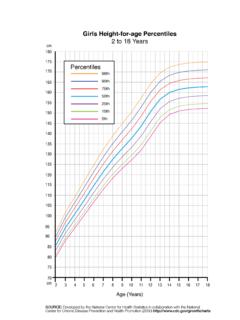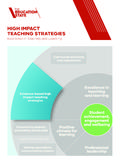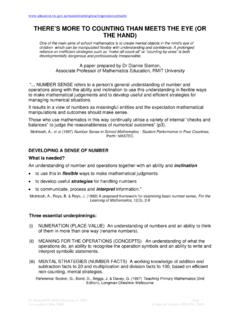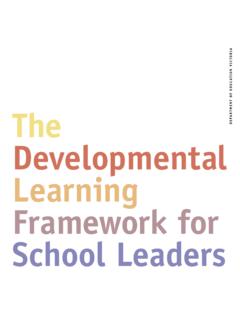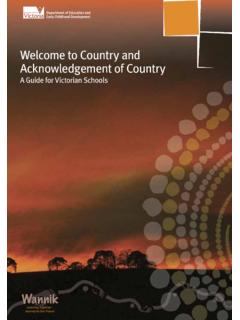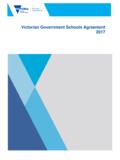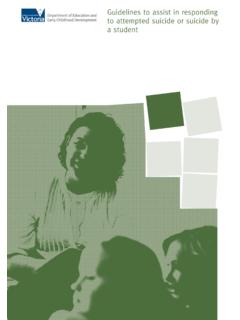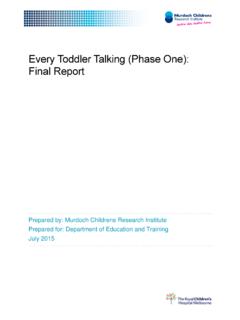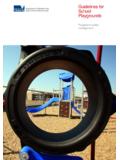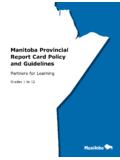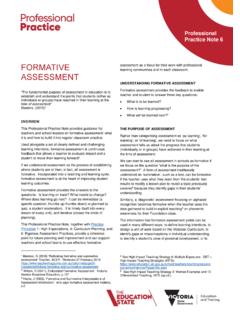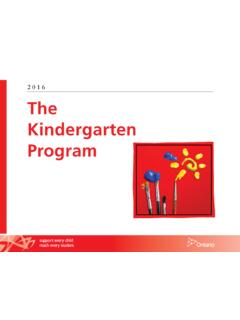Transcription of Assessment DEFINING MODERATION FOR AND OF …
1 Professional Practice Note 15 Assessment MODERATION "One of the most powerful research-based strategies for linking Assessment to improved instructional practice is teacher MODERATION . This process involves educators in a collaborative discussion of student work based on predetermined Assessment OVERVIEW This Professional Practice Note guides teachers and school leaders on how to use MODERATION to improve student learning growth. MODERATION supports: the development and use of consistent Assessment practices across classrooms and teachers the development of metacognitive2 and self-regulation skills to enable students to monitor and lead their own learning. Understanding the process of MODERATION and how it can be used in schools is a driver for improvement of student learning outcomes. MODERATION enables teachers within a school to develop and apply a consistent and precise language of Assessment which can be used by teachers, students and families to describe and discuss student learning.
2 This Professional Practice Note, together with the Practice Principles, may be a useful reference point for future planning and improvement and can support schools at all stages of implementing MODERATION for formative Assessment . 1 Ontario Ministry of Education. (2007). Teacher MODERATION : Collaborative Assessment of Student Work. Retrieved 27 February 2018: Masters, G (2015) Rethinking formative and summative Assessment Teacher, ACER. Retrieved 27 February 2018: 2 DET Professional Practice Note 14 Using Metacognition to Support Student Self-Regulation and Empowerment: (insert hyperlink when available DEFINING MODERATION FOR AND OF Assessment MODERATION is the practice of teachers or students sharing and developing their understanding of what learning looks like by examining examples of different types and quality of students work and comparing these with formal standards and success criteria (the Victorian Curriculum F-10 Achievement Standards).)
3 The practice gives teachers and students the collaboration structure and processes to look closely at evidence (student work samples) to establish: what is to be learned? how is learning progressing? what will be learned next?3 MODERATION enables discussion about: how to interpret the Victorian Curriculum F-10 Achievement Standards what students need to learn to meet Standards what success looks MODERATION is an Assessment practice, but it is also a technique that strengthens other Assessment practices. It provides a structure and process for teaching teams, teachers, classes and individual students to develop a shared and deep understanding of learning intentions, success criteria and the curriculum standards on which Assessment is Collaboration underpinned by evidence is at the heart of successful Assessment practices, and evidence of student learning is key to this. Evidence is directly observable: you should be able to see it, touch it or hear MODERATION can be used by both teacher and students: 3 DET Professional Practice Note 6 Formative Assessment : 4 Ontario Ministry of Education.
4 (2007). Teacher MODERATION : Collaborative Assessment of Student Work. Retrieved 27 February 2018: 5 DET Assessment in practice MODERATION : 6 Griffin, P (2009). (op. cit), Professional Practice Note 15 Teacher MODERATION is a process by which teachers, usually with different experiences and from across a range of year levels, meet to review student work samples based on the Victorian Curriculum F-10 Achievement Standards. Student MODERATION is a process of embedding learning intentions and empowering students to self-identify what success looks like. This might be via examination of (de-identified) student work samples, use of rubrics to self-assess or peer-assess, and collaborative identification of learning goals. MODERATION can be linked to data walls7, as both approaches create vehicles for robust discussions about evidence of student learning. Both MODERATION and data walls feed into the design of learning and actionable classroom strategies.
5 MODERATION also helps build collective efficacy that is, teachers collective power to improve learning outcomes for students. USING MODERATION The purpose of MODERATION is to make consistent, valid, evidence-based decisions. MODERATION can be used within an improvement cycle: before Assessment to build agreement around what achievement of standards looks like and plan the teaching and learning program as Assessment to establish student understanding, monitor progress, and adjust a learning program after Assessment to support consistency of teacher judgement and alignment with curriculum 7 DET Professional Practice Note 6 Using Data Walls: 8 Wiggins, G. & McTighe, J. (2005). Understanding by Design Expanded 2nd Edition. Alexandria, VA: ASCD. 9 Victorian Curriculum and Assessment Authority (VCAA). (2018). Guide to formative Assessment Rubrics.
6 VCAA. Retrieved 5 February 2019: Using MODERATION before Assessment , to align curriculum, pedagogy, Assessment and reporting Schools can use MODERATION to align curriculum, pedagogy, Assessment and reporting with the Victorian Curriculum F-10 Achievement Standards. For example, a MODERATION can be used: as one step in the design of summative Assessment tasks to develop marking guides for a learning area or subject that use student work samples to show how student achievement can be linked to the Victorian Curriculum F-10 Achievement Standards to determine learning intentions and describe a learning continuum using the Victorian Curriculum F-10 to identify phases within a learning continuum and develop a rubric that breaks up complex learning into small, increasingly complex segments which support collection of evidence of student learning and consistency of Assessment Incorporated into a whole school planning process, MODERATION supports consistent teacher judgements.
7 Accuracy of reported results and effective gathering of evidence of student Using MODERATION as diagnostic Assessment to establish students current levels of understanding MODERATION can also be a part of diagnostic Assessment : a rubric developed in a MODERATION process can be also used to gather information about student understanding prior to starting a unit of work a teacher can collect evidence of students current achievement levels which can be compared against the rubric as part of a MODERATION discussion within a teaching team 10 Department of Education Queensland. (2018) Assessment and MODERATION in Prep to Year 10 . Queensland Government. Retrieved 5 February 2019: Professional Practice Note 15 the teaching team can then identify what students are ready to learn and discuss how to set learning objectives, decide on an instructional focus and select effective strategies within each learning Using MODERATION for student self-regulation, to monitor progress and adjust learning MODERATION supports students to develop important self-regulation and metacognitive skills including: self-reflection, self-questioning, and critical questioning.
8 Students may use MODERATION : To set individual and collective goals. For example, teachers might invite students to use self-questioning to reflect on success criteria developed for a lesson, self-evaluate and set their own goals, and then follow this up with a group discussion that invites students to explore the thinking of others, develop critical listening skills and come to consensus about what they want to explore in more detail. To check for understanding. For example, a teacher might invite the class to discuss the Assessment criteria and standards from a unit of work and use anonymous work samples from another class to discuss and rate the samples. To monitor own progress. For example, a teacher might give students a copy of a formative Assessment rubric containing examples of phases within a learning continuum and invite them to align these to their learning goals. Even very young children are able to use a wide range of metacognitive strategies to set goals and check for Students with a strong self-regulation skills are able to reflect on their own knowledge, set goals and plan for increasingly complex learning tasks, habits which enable them to recognise and lead their own learning and teach 11 Victorian Curriculum and Assessment Authority (VCAA).
9 ( ) 12 DET Professional Practice Note 14 Using Metacognition to Support Student Self-Regulation and Empowerment Using MODERATION after Assessment to support consistency of teacher judgements against the relevant achievement standards After Assessment , teachers can use MODERATION to ensure consistency of teacher judgement about student achievement. Effective MODERATION supports teachers to: develop deep understanding of the Victorian Curriculum F-10 Achievement Standards gather evidence of student learning against the achievement standards from Assessment tasks, Assessment folios, and other examples of student work, and cross reference these with marking guides or rubrics that document the aspects of the achievement standard being assessed give students specific feedback that moves learning forward. MODERATION can be carried out at multiple points within the teaching and learning cycle. It supports consistent Assessment based on evidence-based evaluation of student progress and generates reliable data that teachers can confidently discuss with students and their parents.
10 AN APPROACH TO SUCCESSFUL MODERATION The following steps describe an approach to a successful teacher MODERATION process. Adapt these to set up a teacher MODERATION in your school. This could be completed with your professional learning team or team meeting: Building the foundation A shared understanding of student achievement will be firmly anchored in the Victorian Curriculum F-10 and use the language of the continuum of student learning. This process will vary across schools, but it is based on teachers developing the skills and the tools to judge where students work is on the continuum. Start with the Curriculum Achievement Standards for your level. As a group, look at the overall skills and knowledge described and break this down into a continuum of learning to be delivered over the teaching period. 13 Frey, N., Hattie, J., Fisher, D (2018), Developing Assessment -Capable Visible Learners, Grades K-12: Maximizing Skill, Will, and Thrill.

